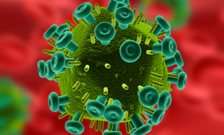Scientists begin potential HIV cure trials

Scientists and clinicians from five leading UK universities, including King's College London, will begin a groundbreaking trial next year to test a possible cure for HIV infection.
Efforts to cure HIV in the past have been thwarted by the virus's ability to lie dormant inside blood cells without being detected. The new therapy combines standard antiretroviral drugs with two new weapons: a drug that reactivates dormant HIV, and a vaccine that induces the immune system to destroy the infected cells.
Fifty patients in the early stages of HIV infection will take part in the trial. The researchers hope that within months, the stores of hidden HIV in these patients – called the HIV reservoir – will be significantly reduced. They expect to know the results in 2017.
The trial is being conducted by the CHERUB collaboration - an alliance of HIV researchers at King's, Oxford University, Imperial College London, the University of Cambridge and University College London. It is being funded by a £1.7 million grant from the Medical Research Council (MRC), as part of the Biomedical Catalyst funding stream.
Key preliminary studies by the CHERUB researchers that laid the groundwork for the trial were supported by National Institute for Health Research Biomedical Research Centres (NIHR BRCs) based at the five universities and their NHS trust partners.
Thirty-four million people are infected by HIV worldwide. Antiretroviral therapy (ART) is highly effective at stopping the virus from reproducing, but it doesn't eradicate the disease, so it has to be taken for life.
HIV carries its genetic code in RNA, a molecule related to DNA, but as part of its lifecycle it copies the code into DNA and merges it with the DNA of human cells it has infected. In some cells this DNA remains dormant (latent) enabling it to stay hidden from the immune system and resist therapy.
Drugs called HDAC inhibitors, which are used as cancer treatments, have been shown to reactivate dormant HIV in the laboratory.
One group of patients in the trial will be given a short course of HDAC inhibitors and an HIV vaccine alongside ART. Another group will get ART with placebos. As part of the study the research team are developing an improved method for detecting latency, which has been one of the difficulties in measuring the success of therapeutic approaches such as this.
The researchers, led by Dr Sarah Fidler at Imperial and Dr John Frater at Oxford, hope the trial will provide proof that a cure is feasible.
"We can only truly know if someone is cured of HIV if we stop giving them antiretroviral therapy," said Dr Frater of Oxford University. "We're not going to do that, but we will test if we can reduce the number of HIV-infected cells in these patients. If we can, it will prove in principle that this strategy could work as a cure, even though it will need many more years of further development."
"We know that targeting the HIV reservoir is extremely difficult," said Dr Fidler, "but our research in the labs has led to some very promising results. We now have the opportunity to translate that into a possible new treatment, which we hope will be of real benefit to patients."
Professor Dame Sally C. Davies, Chief Medical Officer and Chief Scientific Adviser at the Department of Health, said: "Research has changed HIV into a long term condition. I am pleased that the world-leading collaborative research within the National Institute for Health Research Biomedical Research Centres has provided the foundations for this major new trial."



















